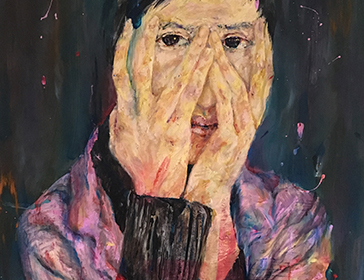Neuroscience
According to the World Health Organization, one in four1 people globally will be affected by a neurological or mental disorder at some stage in life. In Hong Kong, the number of people living with mental disorders ranges between 1 to 1.7 million, while around 200,000 are living with a severe mental disorder. The magnitude of this issue underscores the need for us to discover new therapeutic options that can make a difference in our patients’ lives.
At Janssen, our history is tied to neuroscience. We have a legacy of more than 50 years developing treatments for mental illnesses. The first breakthrough treatment2 – haloperidol – was developed by Dr. Paul Janssen to treat schizophrenia. Today, we are more committed than ever to leading the charge to discover novel treatments for our patients so that they can lead normal and healthy lives.
Our portfolio in neuroscience treats a diverse range of neuropsychiatric conditions, from schizophrenia to attention deficit hyperactivity disorder (ADHD). While we have made much progress in neuroscience, we are determined to continue to raise the bar to make mental healthcare a priority worldwide.
Schizophrenia

Jeffrey Sparr, Same Guy
A survivor, battling Obsessive Compulsive Disorder (OCD), Jeffrey’s mission is to help people create peace of mind through expressive arts and storytelling.
Schizophrenia is a serious mental disorder that results in hallucinations, delusions and disordered thinking. There are about 48,000 people3 living with schizophrenia in Hong Kong. While there is no cure, the condition can be successfully treated and managed. Antipsychotic medications are the cornerstone of schizophrenia treatment. However, poor adherence4 to medication is one of the main contributors to relapse.
Attention Deficit Hyperactivity Disorder

Robert Wright, Taxi
Artwork from the National Art Exhibitions of the Mentally Ill, Inc (NAEMI)
ADHD is a neurobiological disorder characterised by the inability to regulate attention and activity and difficulty in impulse control. ADHD is common in children and the estimated prevalence globally ranges between 2–7%5. The reported prevalence in Hong Kong is 6.4%6 in children and adolescents. It can be effectively managed with medications and behavioural therapy.
Depression

Ruyi Huang, Self-portrait
Ruyi is a self-taught artist, engineering professional and practicing yogini living with bipolar disorder.
Depression is a mood disorder that causes persistent profound sadness. More than one in 10 people7 in Hong Kong have depressive symptoms. Left untreated, depression can hamper every aspect of life, from relationships to work.
References
-
World Health Organization. The World Health Report 2001: Mental Disorders affect one in four people. September 28, 2001. Accessed November 26, 2020. https://web.archive.org/web/20201116211340/https://www.who.int/news/item/28-09-2001-the-world-health-report-2001-mental-disorders-affect-one-in-four-people.
-
Janssen Asia Pacific. Neuroscience. Updated October 20, 2020. Accessed November 26, 2020. https://web.archive.org/web/20201130123034/https://www.janssen.com/apac/health-information/neuroscience.
-
The Government of Hong Kong Special Administrative Region. Community support services for patients with mental illness. December 14, 2016. Accessed November 26, 2020. https://web.archive.org/web/20190901025801/https:/www.info.gov.hk/gia/general/201612/14/P2016121400645.htm.
-
Acosta JA, et al. Medication adherence in schizophrenia. World J Psychiatry 2012; 2(5):74-82.
-
Sayal K, et al. ADHD in children and young people: prevalence, care pathways, and service provision. Lancet Psychiatry 2018; 5(2):175-186.
-
Liu A, et al. The prevalence of attention deficit/hyperactivity disorder among Chinese children and adolescents. Scientific Reports 2018; 11169:1-15.
-
Ni MY, et al. Depression and post-traumatic stress during major social unrest in Hong Kong: a 10-year prospective cohort study. Lancet 2020; 395(10):273-284.
